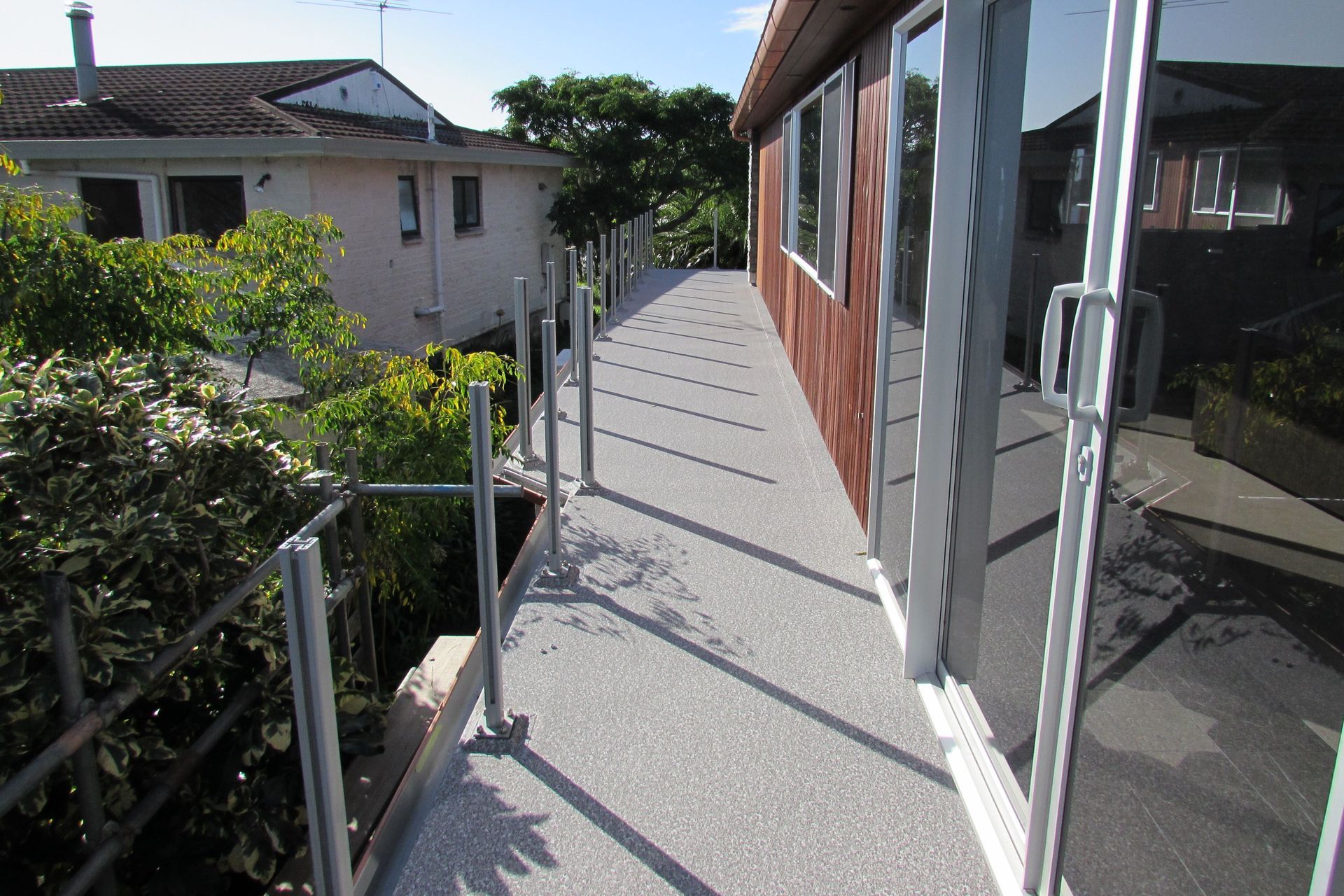Marine decking for the construction sector
Written by
17 March 2021
•
4 min read

Watch an America’s Cup yacht cut through the ocean, with salt water spraying over the decks, and the crew nimbly weaving their way around to manoeuvre the boat on its course and you’ll marvel at the slickness of the operation.
Every detail of the boat’s design has been carefully thought out to maximise the performance of the vessel—and the wider construction industry is taking note.
The marine industry battles with harsh conditions and high safety requirements. Products must be designed to last a long time, or they will quickly perish in the marine environment.
For walking surfaces this is particularly true—not only must they be hard-wearing but grip is also crucial.
It’s no wonder that decking products used in the marine industry have been adopted in the construction sector, says Brendon Sutton, National Sales and Marketing Manager for
Viking Roofspec.
“The legend goes that a few decades ago, a Canadian boat builder used the Dec-K-ing waterproof membrane system for his houseboat roof and jetty and it did such a stellar job, that it morphed into a construction product.”

From marine industry to the construction industry
Dec-K-ing’s waterproof sheet vinyl is adhered onto a plywood or concrete substrate and its laps and flashings are heat welded at 400°C to create a perfectly waterproof surface.
For this reason, it’s ideal for decking over garages or living spaces, or for retrofitting onto existing decks in buildings where the weight of a floating deck would be an issue.
“Unlike other deck systems, which comprise of multiple components, the Dec-K-ing waterproof membrane has an all-in-one waterproof and grippy surface which functions like a roofing membrane but has the aesthetic appeal of a tasteful interior floor vinyl.”
The waterproof membrane comes in a range of natural shades, imitating the earthy hues of stones. The grip surface gives it a tactile and practical texture.
The latest offering from the range is a timber plank look, which is perfect for anyone who wants the look of timber, but also the longevity and comfort underfoot of an exterior vinyl surface, says Brendon.
“One thing the patterns have in common is their neutral tones, so they work with the lion’s share of exterior claddings and paint colours. It’s also very difficult to pick up a pattern repeat on the surface once it’s laid and it’s surprisingly forgiving of soiling.”

Seven stone- and timber-look options
While the stone-look patterns have negligible pattern repeats, Viking’s applicators take extra care with the installation of the timber-look plank; particularly when detailing internal corners or around doorways.
Brendon says to mitigate installation issues, Viking runs monthly licensing classes for applicators and won’t supply their product to any contractor who isn’t licensed.
“Membrane installation is an art form. We don’t just sell the product to anyone and hope they will follow instructions!”
This minimises installation issues, such as creases in the membrane—which you often see on roofs, where aesthetics isn’t as important.
Over the last few years, Dec-K-ing has made a successful transition into the commercial construction sector too, with Dec-K-ing installed in the walkways of several large developments in Auckland.

Durability and aesthetics in one
“It makes perfect sense in this environment, as not only does it add a slick aesthetic to external spaces, but it has a 20-year warranty—longer than most other traditional decking products.
“It’s BRANZ appraised and has been performing in New Zealand since the late-1990s—it’s a proven system.”
For this reason, the product has also been specified in a number of day care centres. Brendon says it takes a lot longer to heat up, so it’s relatively cooler underfoot compared to concrete, tiles, pavers, and timber.
It’s also particularly suitable when retrofitting older homes or apartments where the drop between the interior floor level and exterior deck surface isn’t deep enough to accommodate the height and/or weight of a floating deck.
Find out more about incorporating a membrane decking system into your next project.